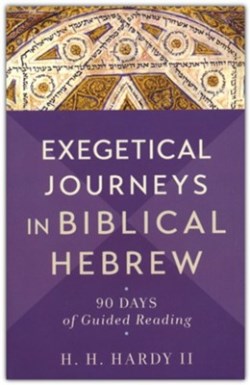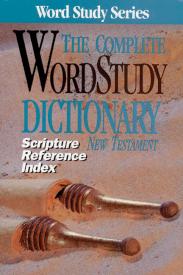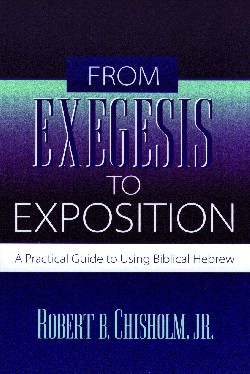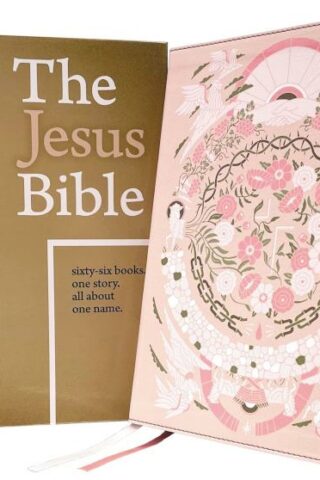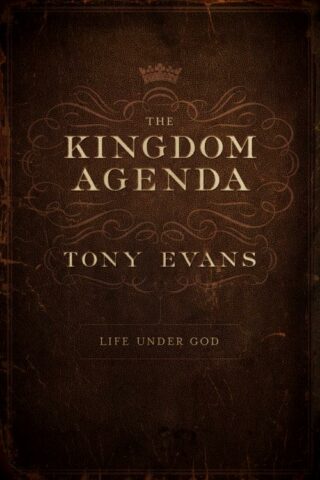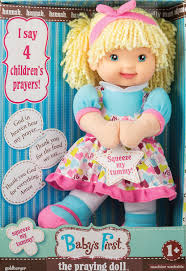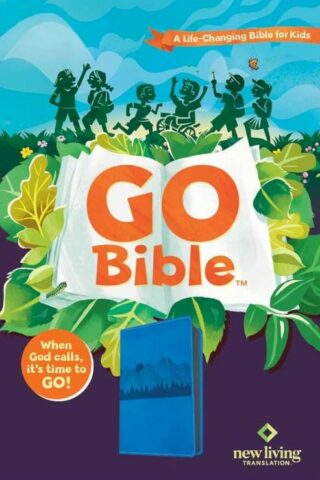Bible Language Tools
Showing all 3 resultsSorted by latest
-
Exegetical Journeys In Biblical Hebrew
$24.99Often students want to maintain their Biblical Hebrew when they’re between courses, or they want to return to reading the Hebrew Bible after some time away, but they don’t know where to start. This book provides ninety days of guided readings to help students retain or refresh their knowledge and grow their skill in reading and interpreting the Old Testament.
H. H. Hardy II, an expert in Biblical Hebrew and an experienced teacher, guides readers through level-appropriate passages selected from across the Old Testament canon, encouraging them to read and investigate a few verses each day. The book begins with easy passages and gradually increases in difficulty throughout the 90 days. Each guided reading includes the Hebrew text, explanations of unfamiliar vocabulary and verb forms, and grammatical descriptions focused on exegesis. Each day ends with a “For the Journey” section, which reflects on important details and applications of the text.
This follow-up to Hardy’s Exegetical Gems from Biblical Hebrew is ideal for Hebrew language students after their first year of study and for those who want to revive their knowledge and love of Biblical Hebrew. A companion volume for Greek is available.
Add to cartOnly 1 left in stock
-
Complete Word Study Dictionary New Testament Scripture Reference Index (Annual)
$19.99This volume is designed as a companion study aid to the COMPLETE WORD STUDY DICTIONARY: NEW TESTAMNENT. There is an index to every scripture reference listed in the Dictionary. Each reference is coded to Strong’s numbering system.
Add to cartOnly 1 left in stock
-
From Exegesis To Exposition
$28.00Many seminarians suspect that their courses in Hebrew have little relevance to their current and future ministry. Author Robert Chisholm believes otherwise, and in From Exegesis to Exposition, he shows seminarians and seminary-trained pastors how to preach accurate, informative, and even exciting sermons that are solidly rooted in the Hebrew text and do not require an inordinate amount of time to prepare.
According to Chisholm, too many seminary courses don’t teach students how to make the transfer from parsing verbs to crafting relevant text-based sermons. This practical guide provides a comprehensive corrective, moving readers from the beginning stages of exegesis to the finished sermon.
Designed as a textbook for a second-year Hebrew course, From Exegesis to Exposition
– introduces students to the best language tools (including computer aids)
– guides students in making text-critical decisions
– discusses how to determine the precise meaning of Hebrew words and phrases and how to avoid common mistakes made in word studies
– surveys Hebrew syntax and demonstrates the impact basic grammatical observations can have on exegesis
– explains how a text’s literary form and features influence interpretation
– outlines and illustrates an interpretive method
– includes numerous examples and exercises to guide readers through the exegetical process and give them an opportunity to develop their own skill
– shows students how to construct an exposition from their exegetical work and includes several sample expositions
Chisholm reminds pastors and seminarians that it is never too late to renew their commitment to the importance of using Hebrew in ministry, regain a knowledge of the essentials of the language, and learn how to use the Hebrew Bible effectively.
Add to cartOnly 1 left in stock

